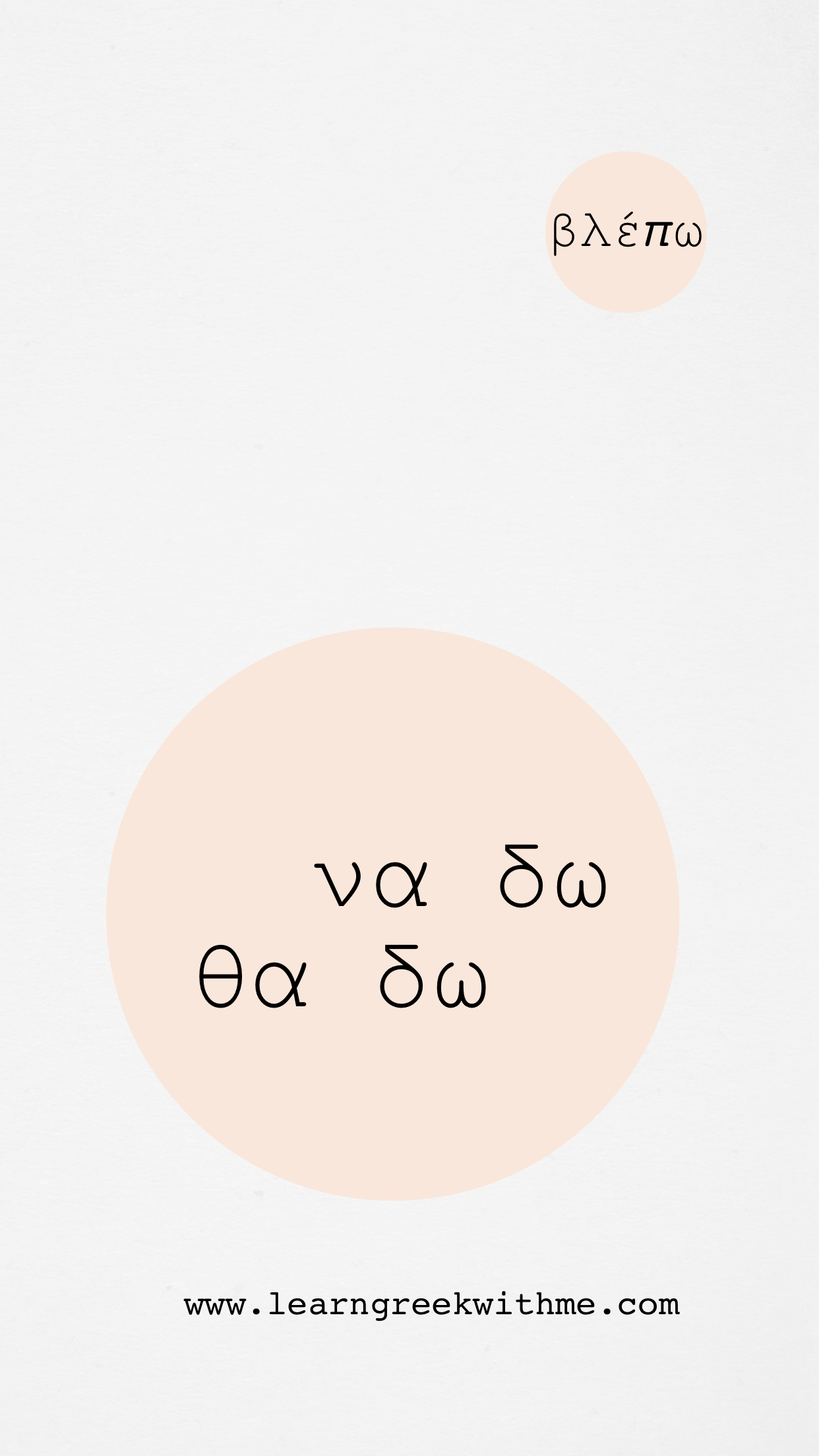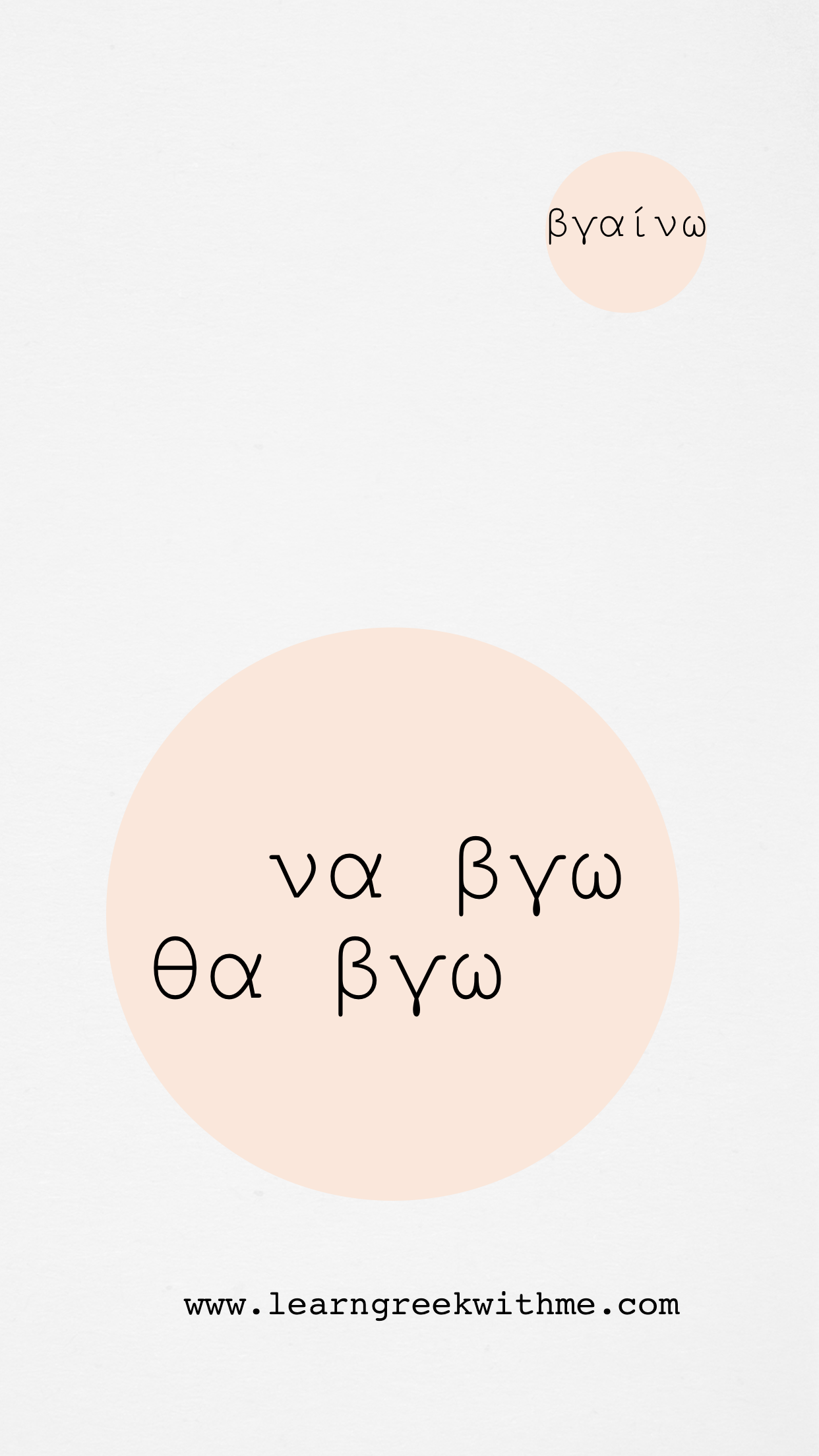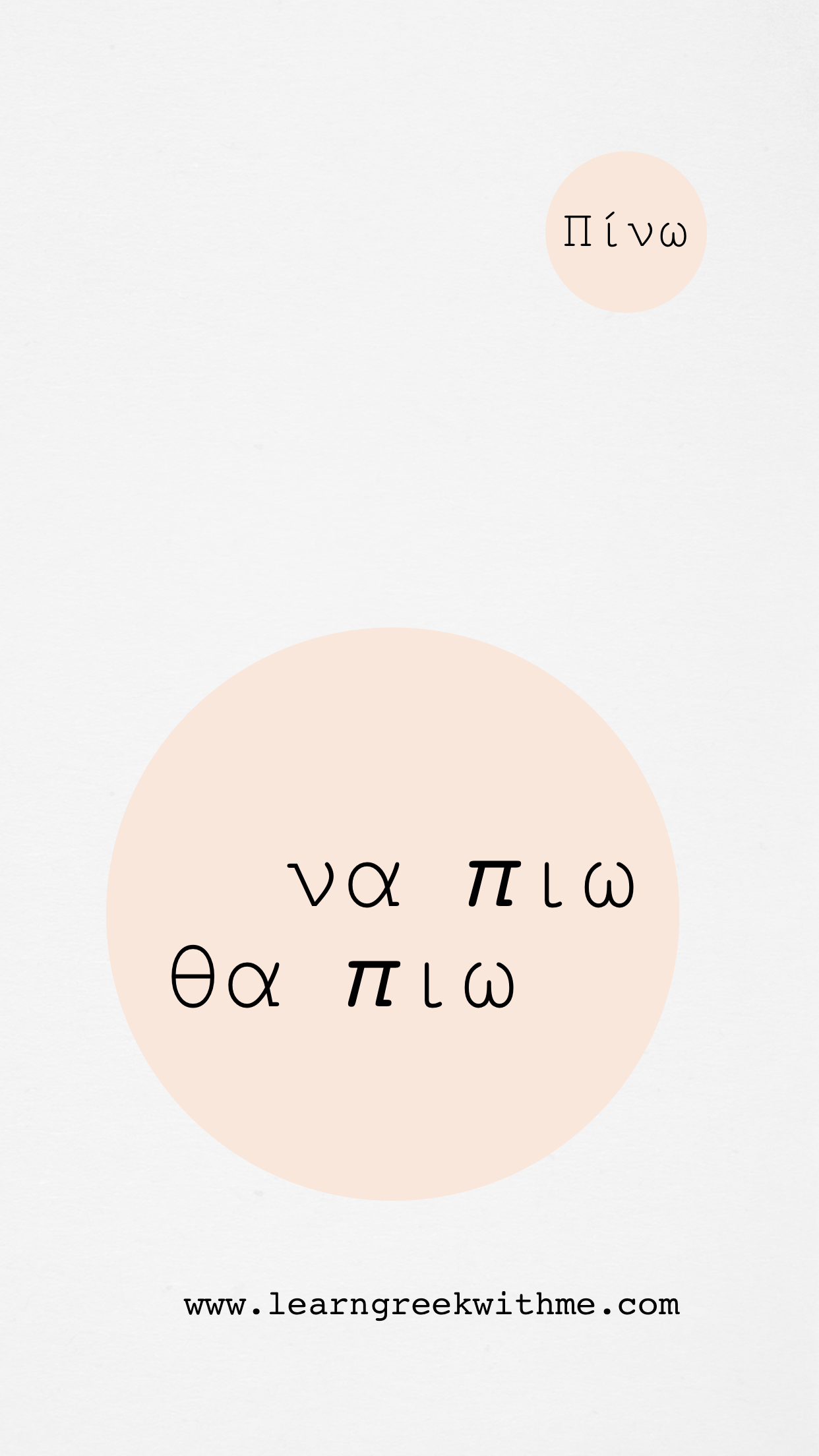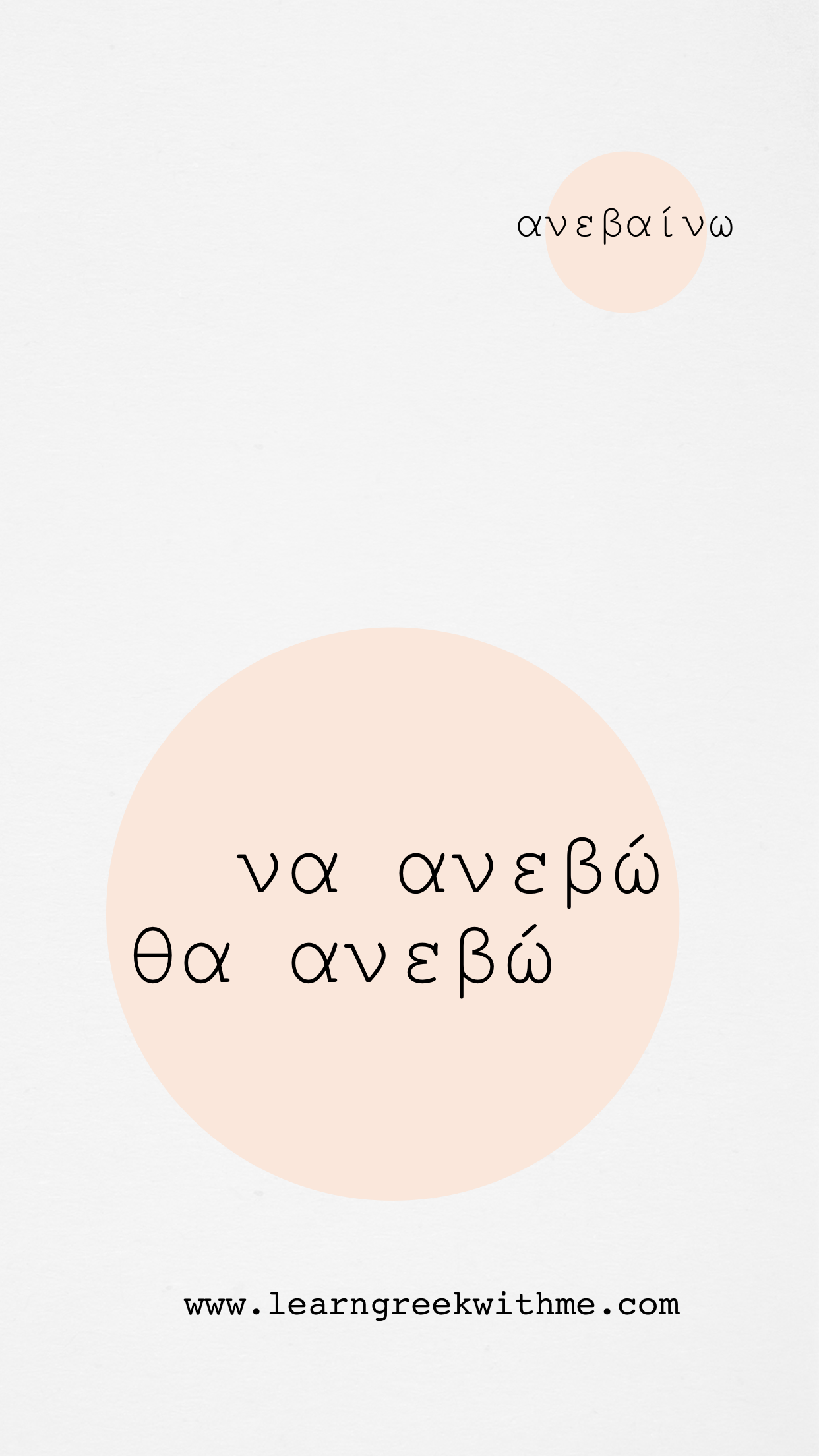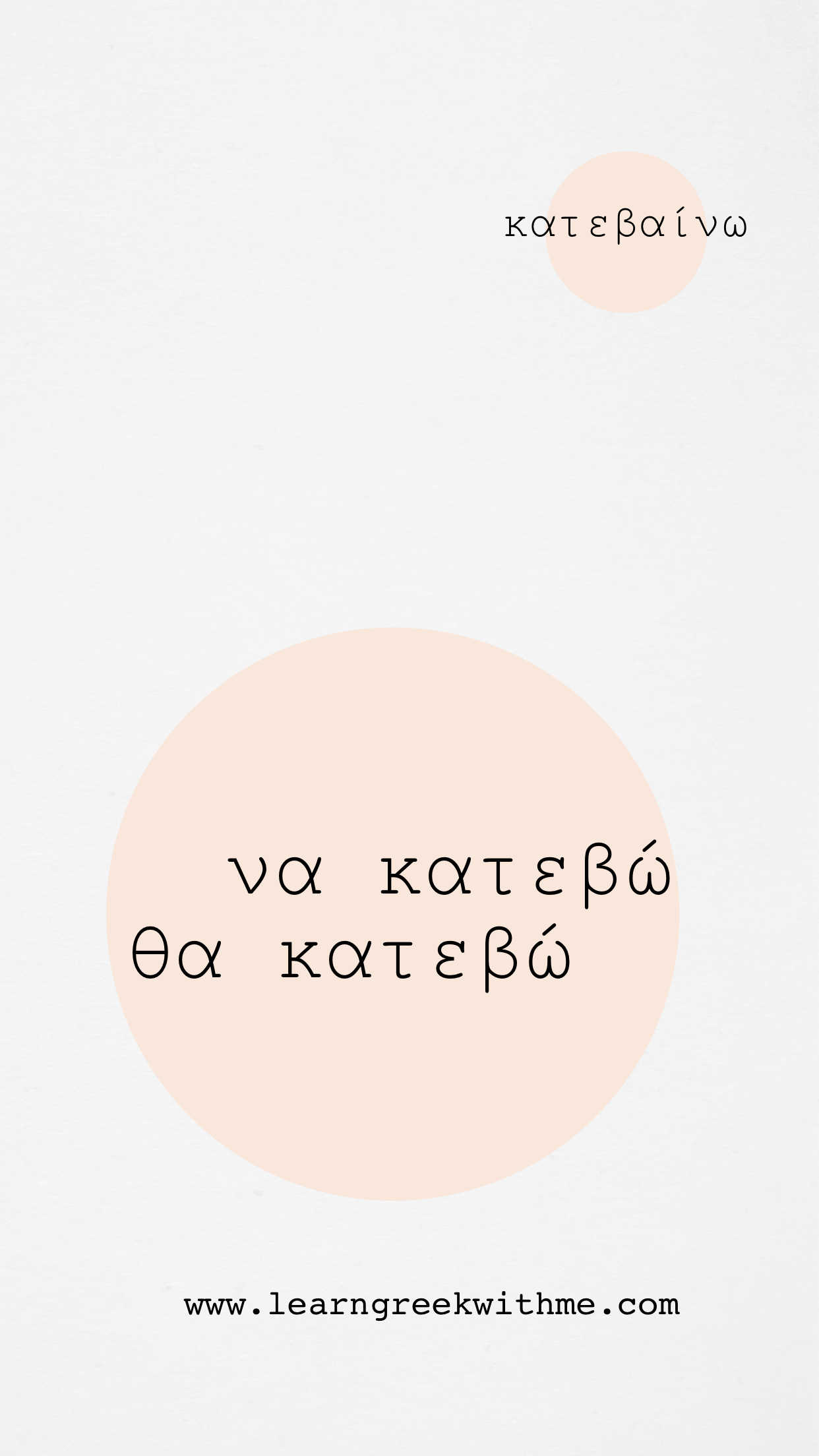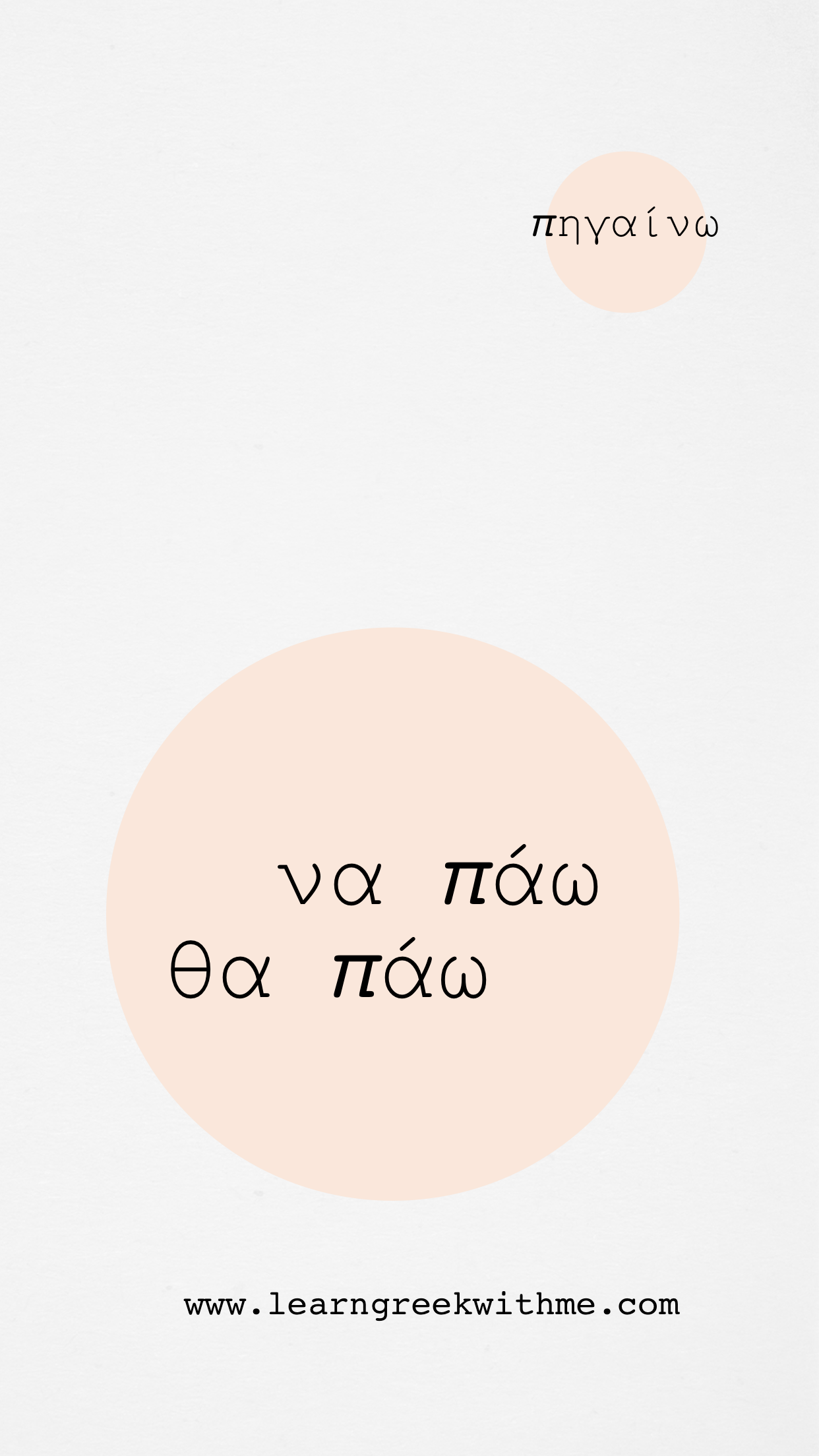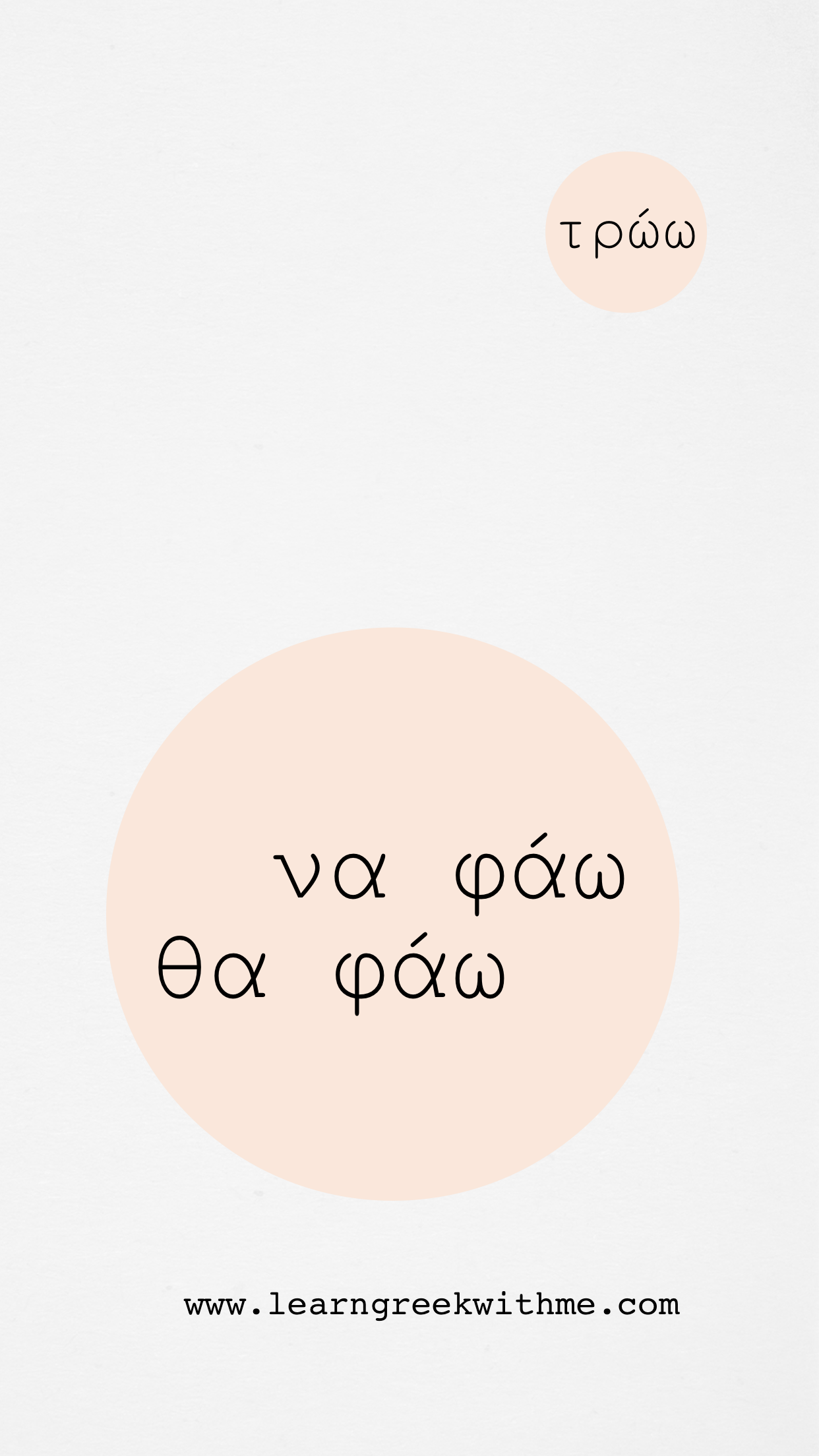First of all, there are 3 Future tenses: Simple, Continuous and Future Perfect. In this blog post we will see ONLY how some irregular verbs form the Simple Future Tense and the Simple Subjunctive Mood
Just a quick reminder: The first part of the Simple Future (as in all three future tenses) Is «θα» and to that we add the perfective stem or the “aorist theme/stem” as we also call it. We use the Simple future tense to describe future actions done at a specific time, without indicating the actual duration of the action. Compared to the continuous one, especially when we talk, we use more often the Simple Future Tense.
Now, for the sujunctive mood, we use the same form of the verb, replacing «Θα» with «να, για να, ας». So if you already know the irregular verbs in the simple future tense, you also know the simple subjunctive mood! Hurray 😀
Let’s take the first verb, the verb «βλέπω» (=i see).
In the simple future tense it will be «θα δω».
Therefore, if you want to say “Tomorrow I will see a Greek film” in Greek you would say «Αύριο θα δω (=i will see) μια ελληνική ταινία».
And if you want to say “Tomorrow I want to see a Greek film” would be «Αύριο θέλω να δω (=I want to see) μια ελληνική ταινία.
The same rule goes for the other verbs as well. Hope it’s helpful 🙂
